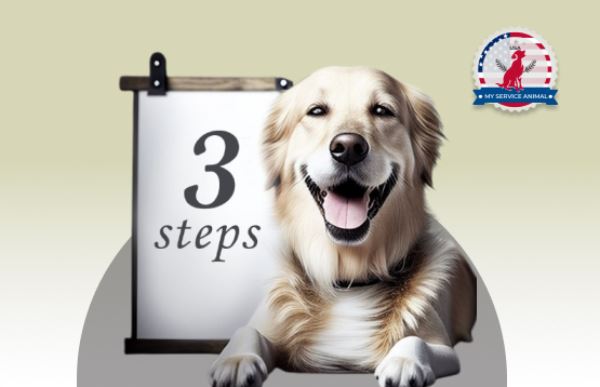A companion dog is not just a pet, it is a true friend and moral support for its owner. These creatures are designed to create a comfortable emotional environment for humans suffering from mental disturbances. That is why many specialists note the extraordinary effectiveness of companion dogs in psychotherapy.
Is Companion Dog the Same as ESA?

Companion animals, or, as they are also called, emotional support animals, are needed by a person to assist in the treatment of mental disorders. Animals have a special positive effect on a person’s mental state, so these creatures are actively used in psychotherapy.
An emotional support animal is not just a family pet. ESA supplies its holder with emotional comfort, moral strengthening, and encouragement which are necessary for a person to accelerate their recovery. Moreover, a companion dog also affects a person’s perception of the world and his attitude to life.
Interaction and regular walks with the animal also have a positive effect. ESA keepers become more cheerful and open to the world and easily make new acquaintances. In addition, systematic exercises also positively affect a person’s physical health.
What Makes a Dog a Companion?

For pets to be officially considered companion animals, a professional must have documentary evidence of the animal’s benefits for your psyche. Unlike service dogs, emotional support animals do not need special training since the main task of a companion is to provide comfort and support for its owner.
In fact, any animal can provide its owner with the reassurance and encouragement he needs. The animal does not need any documents for this. Therefore, if you have a pet whose presence allows you to relax and rest, this animal can already be considered a companion. If you want to use the legal privileges provided for ECA, you need to submit a Companion Animal Registration form.
Who Needs Companion Dogs?
A companion animal is recommended as an auxiliary therapy for people with various non-physical afflictions. For example, studies demonstrate the positive impact of companion animals in treating depression, post-traumatic stress disorder, OCD, ADHD, and other mental health issues.
For example, animals help patients with PTSD establish a connection with reality and not focus on past traumatic events. In addition, the companion dog is a great listener who will not give comments or advice. It is often easier for people to share their experiences with animals.
The main companion dogs’ function is to maintain a good mood for their owners and provide a person with constant and moral support. A companion dog can improve its owner’s life by helping them feel free of disorder. In addition, thanks to animals, people feel less alone, learn to show their emotions, and receive love from others. You can find more in this article: How Emotional Support Animals Help People.
What Is the Difference Between Service Animals and Companion Dogs?

Service animals are trained specifically to meet the needs of their owners. These animals not only provide emotional consolation but are also capable of performing various physical assignments. For example, a service dog can be a guide for the blind. It can also help people with hearing impairments and mobility issues, reducing the impact of disability on a person’s life.
A psychiatric service dog is often recommended for people with severe forms of mental disorders. A PSD will not only provide moral strengthening and encouragement to its owner but can also monitor medication intake and provide first aid if necessary.
in order to get a service animal, a person must have a disability. Therefore, companion animals are often recommended for mental disorders. What’s more, you can train your pet on your own to perform various commands and tasks to help you in your daily life. You may be also interested in the article about The Various Types of Service Dogs.
Breeds of Companion Dogs
A companion dog can be of any breed. The choice of a four-legged partner depends on a person’s wishes and preferences. ESAs do not have to perform specific physical tasks. Therefore, emotional support dogs can be both large and small breeds. Some people prefer smaller companion dogs because they are usually easier to care for. Others feel more comfortable with large dog breeds as they provide security and safety.
However, some breeds are more popular among ESA owners. For example, Retrievers are considered one of the most friendly and people-oriented breeds, so they often become companion dogs. In addition, German Shepherds, Collies, Irish Wolfhounds, and American Staffordshire Terriers are often chosen for emotional support. If you prefer small dog breeds, consider Corgis, Yorkies, Cavalier King Charles Spaniels, and Chihuahuas. All these breeds will become faithful friends with their holders and help them cope with mental disturbances.
How Do I Get a Companion Dog

To be able to become the owner of a companion dog, you must obtain an ESA letter from a psychiatrist or psychotherapist. In the letter, the specialist confirms that you have a mental disorder and provides evidence of the positive impact of the animal on the treatment process.
However, before issuing you an ESA letter, the doctor must assess your psychological state, establish a diagnosis and choose the best therapy. This may take some time, as the specialist needs to gather as much information as possible about your health. Assessment of your psychological state can occur through a conversation or by filling out a questionnaire. The specialist independently chooses, in his opinion, the most suitable way of interacting with the patient.
Be sure to tell your therapist about your desire to have an emotional support animal. If you have already had the experience of interacting with animals and you felt their positive influence on your condition, tell a specialist about it. It is also important that the professional has sufficient knowledge in this area to be able to recommend ESA for you.
Companion Dogs and No Pet Policies
A companion dog, as well as a service dog, have the opportunity to live with their owners in rented accommodation, regardless of the building’s pet policy. According to the federal Fair Housing Act, if the animal is needed for therapeutic purposes and ensures the normal life of its owner, the landlord cannot prohibit the animal’s residence. The landlord must provide reasonable accommodations for tenants with ESA and cannot evict them without objective reasons.
If the landlord refuses to allow a dwelling for the animal, they must provide an objective justification for the refusal and support it with facts. Also, by law, a landlord cannot charge extra or require a deposit for a companion dog. If the animal causes damage to the lessor’s property, the ESA owner must fully compensate for the damage and restore the damaged property.
Despite the landlord’s legal concessions for tenants with companion animals, residents must still comply with the rules of living in the rented accommodation. First of all, the animal must be safe for others. The dog must not bark, growl or jump on people and must also have a satisfactory state of health, confirmed by a certificate from a veterinarian. If the animal appears aggressive and poses a threat to others, the landlord has the right to ask you to leave, providing the facts of the animal’s unacceptable behavior.
Flying With Your Companion Dog
A few years ago, emotional support animals could fly freely in the cabin of an airplane next to their owners. For many people, flying can cause fear and panic attacks, so the presence of a companion animal nearby was completely justified. The animal helped its owner calm down and relax during air travel.
However, the legislation has been amended, according to which a companion dog can no longer accompany its owner on board an aircraft. There is an opinion that due to the lack of special training, emotional support animals can behave unpredictably in unusual conditions. Airlines were afraid that takeoff could trigger aggressive animal behavior. Therefore, no law would officially grant companion dogs the right to fly in an airplane cabin.
However, most airlines allow small breeds of animals to be carried in the cabin. To do this, you need to submit the forms for the transportation of the animal to the air carrier in advance. In addition, you will need special equipment for transporting animals, such as a harness, a muzzle, and a carrier. Also, animals’ flight in the plane’s cabin is paid for.
Transporting an animal in the luggage compartment or as cargo is also possible. Carefully read the carrier’s requirements for transporting the animal. Remember that you yourself must take care of the comfort of your companion during air travel. Also, check with the embassy of the country you plan to fly to in advance to make sure the import of animals is allowed by law.

























